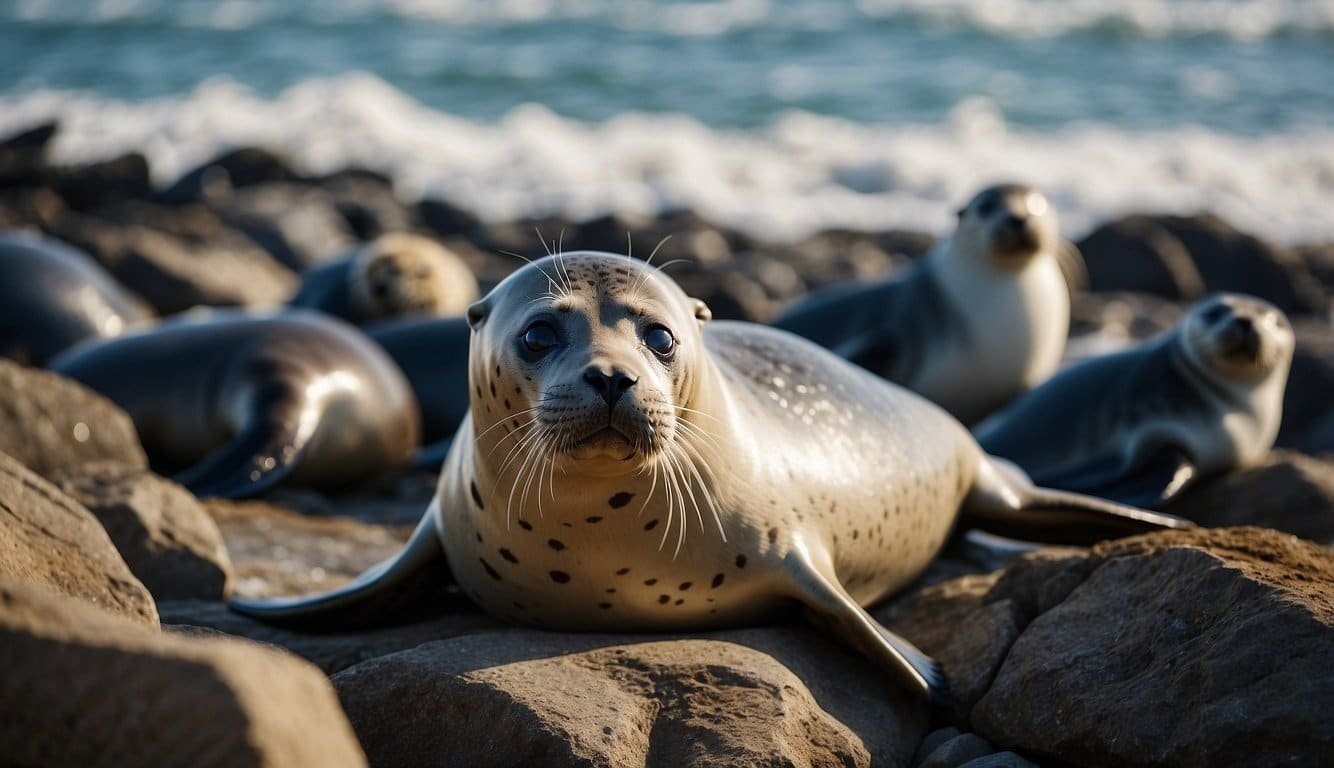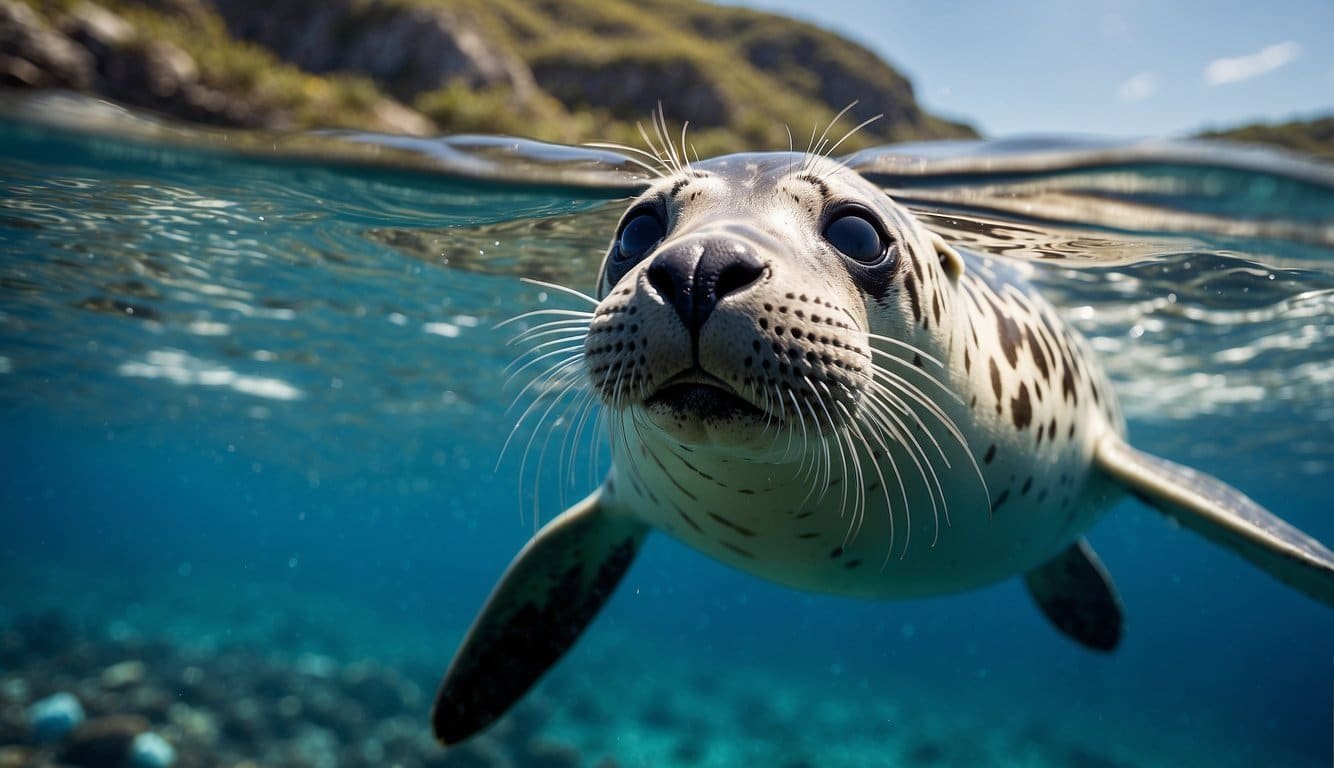Seal Basics
Seals belong to a group of marine mammals known as pinnipeds, which also includes sea lions and walruses. These animals are well-adapted to life in the water, with their streamlined bodies and powerful flippers helping them navigate with ease. Pinnipeds are split into three families: Phocidae (the true seals or earless seals), Otariidae (the eared seals, including sea lions and fur seals), and Odobenidae (the walrus).
| Family | Common Name | Ears Visible? |
|---|---|---|
| Phocidae | True Seals | No |
| Otariidae | Eared Seals | Yes |
| Odobenidae | Walrus | Yes |
True seals lack external ear flaps and have shorter flippers compared to their Otariidae cousins. This makes them more adept at deep diving and spending time in the water, whereas the eared seals are more agile on land due to their longer flippers.
Seals have a layer of fat called blubber that insulates them from the cold ocean temperatures. They are carnivorous, feeding on a diet of fish, squid, and a variety of other marine life. Many species of seals are also talented divers, plunging to great depths in search of food. Breeding habits vary among species, with some exhibiting unique behaviors like the intricate mating calls of the Weddell seal.
The evolution of seals has equipped them with an ability to live in both marine and terrestrial habitats, although they spend most of their lives in the water. Seal species can be found across the world’s oceans, from the frigid Arctic and Antarctic to more temperate coastal waters.
Seals are not only crucial to the marine ecosystem as predators but also as indicators of the health of marine environments. Studies have shown that contaminants in the water can impact the reproductive success of seals, showcasing the interconnected nature of ecology.
Habitat and Lifestyle

Seals are versatile creatures that have adapted to a variety of habitats, from the icy waters of the Antarctic to the warmer regions of the Atlantic and Pacific Oceans. With a lifestyle that’s both fascinating and varied, they’ve mastered the art of thriving in environments that range from harsh, frozen landscapes to more temperate coastal areas.
Habitats of Seals
Seals are found in a diverse array of environments. The Antarctic seals, for instance, are well-adapted to the extreme cold and make their homes on dense ice packs. In contrast, species like the Caribbean monk seal, which is now unfortunately extinct, once basked on the warm, sandy beaches of the Caribbean Sea. From the fresh waters of Lake Baikal where the Baikal seal resides, to the rocky coasts and islands favored by sea lions, seals demonstrate a remarkable flexibility in choosing their habitats.
Underwater Activities
Seals are adept underwater hunters, diving deep into the ocean to pursue a diet of fish, squid, and krill. A seal’s dive can last up to two hours, depending on the species, and they are known to reach depths of hundreds or even thousands of meters. Under the sea, their streamlined bodies and powerful flippers make them agile swimmers, able to chase down prey with precision.
Seal Behavior
On land and ice, seals exhibit a variety of social behaviors. Some are highly social, forming large colonies where vocalization plays a key role in communication. During breeding season, mothers are highly protective of their pups, whom they nurse with rich milk. Seal pups are usually born in pairs and are quite reliant on their mothers for the first few weeks of their lives, until they’re ready to take to the water themselves. Protection from predators and the elements is critical, and seals often use the topography of their environment, like ice formations or sand dunes, to shield themselves and their young.
Conservation Efforts

Seals face a multitude of threats leading to a decline in their populations, but active conservation efforts are crucial in changing this narrative.
Threats to Seals
Pollution, climate change, and hunting are the primary threats to seal species worldwide. Chemical pollutants in the oceans can lead to deadly diseases affecting these marine mammals. For instance, oil spills can contaminate their habitat, leading to fatal exposure and ingestion of toxic substances. Climate change raises sea levels and causes ice habitat loss for ice-dependent species like the harp seal, which rely on ice for birthing and resting. Hunting, both subsistence and commercial, has historically contributed to population declines, and although some seal species have recovered, illegal poaching and bycatch by fishermen still pose significant risks.
Protective Measures
Numerous measures are adopted to counteract the threats to seal populations. Designating marine protected areas ensures a safe haven for seals from human activities. For instance, conservationists have prioritized the protection of habitat that is critical for the Hawaiian monk seal’s recovery. Legislation plays a key role in seal conservation, with laws and regulations enacted to prevent overhunting and protect ocean water quality. International agreements, like the Marine Mammal Protection Act, provide a legal framework to guard against exploitation and ensure species’ survivability.avitability. These efforts, combined with public education campaigns and scientific research, are integral components of the multifaceted approach necessary to keep these enchanting marine animals swimming in our oceans for generations to come.

